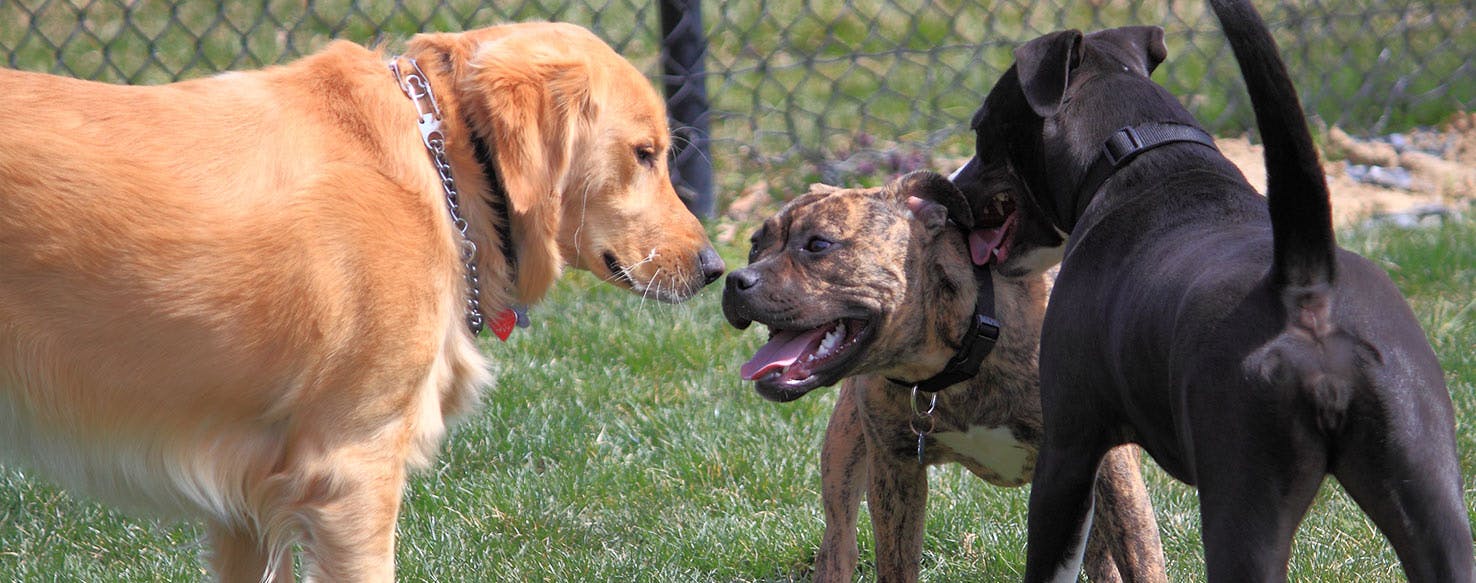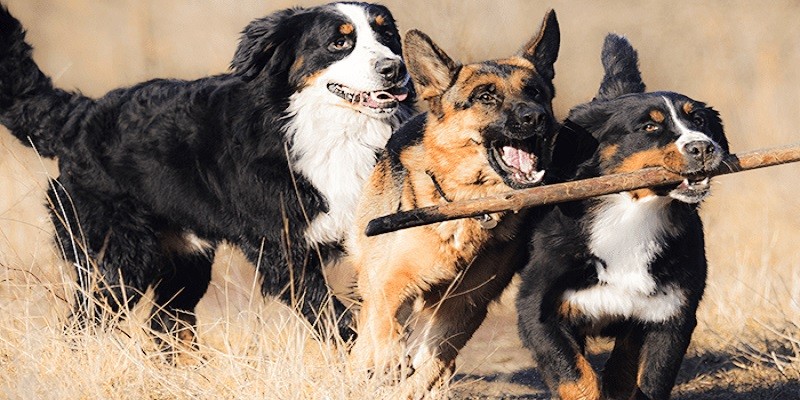Last Updated on May 10, 2025 by Pauline G. Carter
Yes, dogs can get pregnant by two dogs at the same time. Dogs have the ability to conceive offspring from multiple male dogs during their heat cycle.
This means that if a female dog mates with multiple males within a certain time frame, each mating has the potential to result in a pregnancy. While rare, it is possible for a litter of puppies to have more than one father.
Understanding canine reproduction is an essential aspect of responsible pet ownership, as it allows owners to make informed decisions regarding breeding and preventing unwanted pregnancies. We will delve into the specifics of dog pregnancy and explore the concept of multiple paternity in canine litters.
Factors Influencing Canine Reproduction
Factors influencing canine reproduction include the age, health, and fertility of the dogs involved. While it is possible for two dogs to mate and result in pregnancy, the outcome depends on various factors such as timing, breed compatibility, and reproductive health.
Dogs are fascinating creatures, known for their loyalty, playfulness, and ability to form deep connections with their human counterparts. When it comes to canine reproduction, many dog owners and enthusiasts have questions about the process and the various factors that can influence it.
In this blog post, we will explore the factors influencing canine reproduction, focusing on the reproductive cycle of female dogs and the fertility of male dogs. Understanding these factors can provide valuable insights into the complexities of canine reproduction.
The Reproductive Cycle Of Female Dogs
The reproductive cycle of a female dog is quite different from that of humans. Here are some key points to understand:
Female dogs experience a unique reproductive cycle known as the estrous cycle, which consists of four stages: Proestrus, estrus, diestrus, and anestrus.
- Proestrus is the first stage, usually lasting around 9-10 days. During this time, female dogs release pheromones that attract male dogs, but they are not yet receptive to mating.
- Estrus, also known as the heat cycle, is the second stage. This is when female dogs are sexually receptive and can become pregnant. Estrus typically lasts for 5-12 days, but the exact duration can vary.
- Diestrus is the third stage, lasting around 60-90 days. If the female dog has not mated during estrus, she will not become pregnant, and her body will prepare for the next cycle.
- Anestrus is the final stage, characterized by a resting period. Female dogs are not sexually receptive during this time, and the cycle begins again with proestrus.
Understanding the reproductive cycle of female dogs can help dog owners identify the most suitable time for breeding and prevent unwanted pregnancies.
Male Dog Fertility And Factors Affecting It
Male dog fertility is influenced by various factors. Here are some important points to consider:
- Sperm production: Male dogs produce sperm continuously, which is stored until mating occurs. The quality and quantity of sperm can impact fertility.
- Age: Just like female dogs, male dogs also experience age-related changes in fertility. Older dogs may have a decreased sperm count and motility.
- Health and breeding soundness: A male dog’s overall health plays a crucial role in their fertility. Regular veterinary check-ups and maintaining optimal health are essential.
- Breed-specific considerations: Certain dog breeds can have specific issues related to fertility. It is important for breeders to be aware of potential breed-specific challenges.
Taking these factors into account can help ensure successful breeding and improve the chances of a healthy litter.
Understanding the factors influencing canine reproduction is essential for dog owners and breeders alike. By being knowledgeable about the reproductive cycle of female dogs and the fertility of male dogs, we can make informed decisions that promote the well-being of our beloved pets.

Credit: wagwalking.com
Canine Reproduction
Understanding canine reproduction is crucial in determining if dogs can get pregnant by two dogs. This article delves into the intricacies of the topic, providing clear and concise information about the reproductive process in canines.
Can Dogs Get Pregnant By Two Dogs?
Dogs are fascinating creatures, and one of the many intriguing aspects of their lives is their reproductive process. Understanding how dogs mate and go through pregnancy can provide valuable insight into their reproductive capabilities. In this section, we will explore the mating process in dogs and examine the stages of canine gestation and pregnancy.
The Mating Process In Dogs
The mating process in dogs is an intricate and natural event that involves two dogs coming together to reproduce. Here’s a look at how it unfolds:
- Female dogs experience heat cycles, also known as estrus, during which they become receptive to mating.
- Male dogs, upon detecting a female in heat, will often express their interest by displaying behaviors such as excessive licking, increased vocalization, and restlessness.
- The male dog will mount the female dog from the rear, with the penis becoming fully erect and penetrating the female’s vagina.
- Copulation occurs when the male’s ejaculation deposits sperm into the female’s reproductive tract.
Canine Gestation And Pregnancy
Once the mating process is complete, the female dog enters the stage of gestation, which is the period of pregnancy. Let’s delve into the particulars of canine gestation:
- Canine gestation typically spans around 63 days, although it can vary by a few days.
- During the first few weeks, it may be challenging to determine if the female dog is pregnant, as there may be no visible signs.
- As the pregnancy progresses, physical changes become evident. The female dog’s nipples may enlarge, and she may gain weight.
- Around 25 to 30 days after fertilization, a veterinarian can perform an ultrasound to confirm the pregnancy.
- In the final weeks of gestation, preparations for birthing occur. The female dog may show nesting behaviors, such as seeking a suitable location to give birth.
- Finally, when the time is right, the female dog will go into labor, delivering puppies.
Understanding the intricate process of canine reproduction allows us to comprehend the beauty and complexity of nature. From the mating process to canine gestation and pregnancy, dogs truly showcase the wonders of life.
Multiple Sires And Paternity In Dogs
Dogs can indeed get pregnant by multiple mates, resulting in a litter with different fathers. This phenomenon, known as multiple sires and paternity in dogs, occurs when a female dog is bred by more than one male during her estrus cycle.
Can Dogs Have Multiple Sires In One Litter?
Multiple sires and paternity in dogs can be a fascinating topic to explore. When it comes to canine reproduction, it is possible for a litter of puppies to have multiple sires. Let’s delve deeper into this concept:
- Dogs are polygamous animals, which means that they are naturally inclined to mate with multiple partners.
- During a female dog’s heat cycle, she typically releases multiple eggs, increasing the chances of fertilization by different males.
- When a female is in heat, several male dogs may vie for the opportunity to mate with her, resulting in a situation where more than one male could potentially sire the litter.
- The presence of multiple sires in one litter is known as multiple paternity.
- The frequency of multiple paternity in dogs can vary depending on factors such as the duration of the female’s heat cycle, the number of available males, and the breeding behavior of the dogs involved.
Dna Testing For Multiple Paternity In Dogs
Determining the paternity of puppies in a litter can be challenging without scientific intervention. DNA testing is a valuable tool that enables breeders and dog owners to ascertain the lineage of their pets. Here’s how DNA testing can help identify multiple paternity in dogs:
- DNA testing involves collecting samples, usually through a cheek swab or blood test, from the dam (mother) and the presumed sires (potential fathers).
- The collected DNA samples are then sent to a laboratory for analysis.
- The lab technicians compare the DNA profiles of the dam and the potential sires to determine the genetic contributions of each male to the litter.
- The results can reveal the presence of multiple paternity, confirming which males are the biological fathers of specific puppies.
- DNA testing for multiple paternity can provide valuable insights into a dog’s heritage, health risks, and genetic traits.
While it is possible for dogs to have multiple sires in one litter, DNA testing is necessary to determine the exact parentage of each puppy. Understanding the concept of multiple paternity adds to our knowledge of canine reproduction, genetics, and care.
Frequently Asked Questions For Can Dogs Get Pregnant By Two Dogs?
Can Dogs Get Pregnant By Two Different Dogs?
Yes, dogs can get pregnant from mating with more than one male dog during their heat cycle.
Conclusion
To summarize, dogs can indeed get pregnant from two different male dogs during the same heat cycle. This phenomenon, known as multiple paternity, occurs when a female dog mates with more than one male during her fertile period. While rare, it has been documented in various canine breeds.
Breeding with multiple males can lead to different fathers for each puppy in a litter, resulting in diversity among the offspring. This genetic variety can have several benefits, including improved health and resilience. However, it is essential for dog owners and breeders to ensure responsible breeding practices to avoid potential complications.
Veterinary guidance and careful monitoring during the breeding process are crucial to ensure the health and well-being of both the mother and her puppies. Understanding the complexities of canine reproduction can help dog owners make informed decisions and ensure the future generations of dogs are healthy and genetically diverse.

